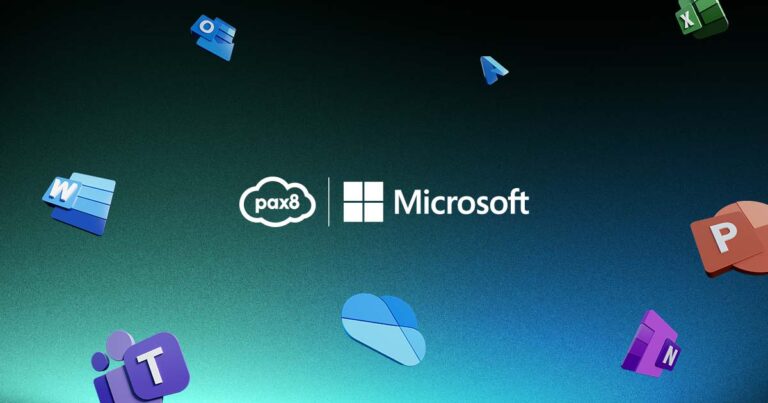There are many aspects and avenues to take for managed service providers (MSPs) looking to bolster their clients’ cybersecurity. In this blog, we’ll go through the various response tools — EDR, MDR, and XDR security — what they stand for, and what they entail.
What is EDR security?
EDR (endpoint detection and response) security was first coined by Gartner analyst, Anton Chuvakin a decade ago and has become a valuable cybersecurity solution for many businesses ever since, because it offers a comprehensive view of the endpoint environment (meaning computers, mobile devices, sensors, etc.). With real-time visibility into the endpoint’s behavior and activity, EDR can detect and respond to advance threats that previously could elude traditional security solutions. EDR solutions are designed to respond to threats quickly and effectively and can automatically quarantine or isolate infected endpoints to contain the spread of the threat and remediate affected systems.
In addition, EDR solutions are highly configurable and can be tailored to meet specific security requirements. This allows organizations to customize the solution to meet their unique security needs.
By providing detailed analytics and reporting that can help organizations understand the threat landscape, these organizations can make more informed decisions about their security posture at an endpoint level. It also offers great telemetry about suspected threats and easy actions to quarantine and remove the root cause, allowing for effective device security posture if managed well by expert humans.
It’s easy to see why EDR threat detection solutions became popular and why they continue to furnish businesses with valuable risk reduction. (Market research valued the global EDR software market at $2.87 billion in 2022, projecting it to reach $16.89 billion by 2030.)
How does EDR work?
EDR is purpose-built to go beyond detection-based, reactive cyber defense. Instead, it enables security analysts to be able to proactively identify these threats. Here’s how:
- Improved visibility: EDR collects data and analytics continuously, then reports that data to a centralized system to ensure full visibility into the state of the network’s endpoints from a single console.
- More efficient action: The data and collection processes allow an organization’s security team to act quickly, a critical benefit because with most cybersecurity threats, time is of the essence. The faster a single endpoint compromise can be detected and stopped, the quicker the damage can be reduced, allowing the business to continue its operations.
- Threat hunting and analytics: EDR enables advanced threat hunting, which actively searches for vulnerabilities and security threats instead of waiting to be triggered, and real-time analytics, which provide instant analysis to assess what damage was done or whether the alert actually broke a preconfigured rule.
- Automation: Businesses can activate pre-configured incident rules to restrict suspicious activity, which can also automatically handle specific incident response tasks. This enables the solution to remediate certain incidents, which, in turn, reduces the load on security analysts. These pre-configured “blast radius” reduction rules and actions can augment defensibility and help MSPs show due diligence in their role to protect clients’ sensitive data as well as their own.
Fast-spreading, self-propagating attacks that move rapidly between hosts, or botnets that harness the power of multiple hosts to fuel a Distributed Denial of Service attack targeting another victim network, are now entrenched realities of the cybersecurity world. Worse, however, is a growing class of actors that are actively trying to bypass EDR and security controls. Company leaders can’t necessarily put all of their trust in security solutions focused on host-by-host protection. And these same alerts in an EDR that show as “remediated” may merely have stopped the next type of attack rather than neutralizing the source. This is a major factor in the decision to employ an MDR solution.
Although all endpoint threat detection systems possess automated functions, they still require close supervision and handling by trained in-house cybersecurity personnel. The skills gap across numerous areas of IT (including security) complicates this, and can make it difficult for EDR to achieve the pinnacle of threat protection and risk reduction. In the current cyber threat landscape, tools like EDR can result in vast capabilities and posture—or severe limitations—for organizations, based upon the skills and capabilities of the humans managing the EDR console.
What Is MDR and why is it so important in today’s threat landscape?
Managed detection and response (MDR) is not a single solution but rather a suite of security services. Often, this includes EDR software and some elements that EDR users might find familiar, plus a few additions: proactive threat hunting tools, systems to prioritize and amplify the most urgent cyberthreat alerts, integration into the MSP ticketing system for appropriate SLA Management, and more. Specifics depend on what a given MDR company has to offer, the maturity of their platform, and the depth of integration with the partner delivering it.
Most important of all, MDR is best defined by the first word of its unabbreviated form: “Managed.” Through the MSP, the vendor providing the MDR service offers continuous monitoring and response to the organization from a dedicated team of cybersecurity experts, allowing the MSP’s own staff to focus on the needs of their partner. The solution’s component parts give the end user considerable visibility into the threat and vulnerability landscape, surrounding it without worrying about directly controlling its security operations. These factors separate MDR from SOC-as-a-service (security operations center), which doesn’t necessarily offer as much visibility — often only a basic portal for certain interactions. As a result of these factors, it should come as little surprise that MDR services are projected to be the number one growth engine for MSPs in 2024, growing by at least 50%.
Another pervasive problem that plagues IT teams is managing the massive amount of cybersecurity alerts that they must confront on a day-to-day basis. While this isn’t a new problem, it’s one that’s steadily been increasing as endpoints proliferate in the forms of IoT, remote workers, connected supply chain partners, and hybrid networks.
Establishing how best to respond to each alert requires the kind of large-scale scope and expertise that many organizations simply cannot sustain in-house and can lead to “alert fatigue” for organizations who do not use MDR. These companies must have the right skillsets, leveraging the right technology at the right time, to remediate it before it evolves into a potentially serious breach, no matter when it happens.
That’s where MDR steps in. With this service, organizations can provide 24/7 coverage and access to expertise that would be extremely difficult to find and staff independently. And they can do it remotely. As the word “continuous” implies, MDR experts are available nearly around the clock and are equipped to rapidly respond based on their know-how and experience to prevent, contain, and mitigate compromise.
One of the key benefits of MDR oversight is that it frees up internal security team members and resources to go toward ongoing efforts of improving the company’s broader security posture, while MSPs can focus on growing the business.
XDR: what’s next in cybersecurity
Extended detection and response (XDR) is the next logical step in the evolution of cybersecurity technology for modern businesses. XDR widens the scope to look at all critical vectors across an organization’s attack surface, ranging from host devices and other endpoints to network switches and potential cloud security issues. It additionally considers the shift from a device-centric, walled-garden security method to an identity-centric one. An identity-centric position conveys that an individual’s network ends wherever their fingerprints land. This identity focus considers the reality that modern work is migrating to the cloud, which means one’s identity can be made vulnerable far beyond their fingertips.
Certain implementations of XDR combat this risk by pairing the user’s identity and their device holistically and concurrently, both on-prem and in the cloud. This conjoining can enhance broader decisions about security cloud workloads and how to evaluate next steps after a device has been compromised.
Unlike past security tools that focused on devices regardless of the identity of the user, XDR is equipped to use identity and how it correlates to this continuous device posture, echoing key principles of the zero-trust security framework that’s emerged in recent years — specifically, how the true identity of a user can be uncertain, which is why the integration of XDR can be a critical step in assessing trust.
XDR also comes in handy when it comes to implementing an ever-more complex security stack consisting of multiple solutions delivering multiple alerts. An XDR strategy allows MSPs and clients to take advantage of a multilayered security approach while helping to close gaps between siloed products.
This has the combined effect of allowing an organization’s security team to have a complete picture of the attack surface at virtually any time and the peace of mind of knowing the MDR/XDR’s security experts have things under control and can give concise actionable instructions for the MSP and client to take.
Growth in the emerging XDR market isn’t far behind that of EDR. Markets and Markets valued the global XDR market at $1.7 billion in 2023 and projected a compound annual growth rate (CAGR) of 38.4% between then and 2028, when it’s projected to reach $8.8 billion.
Finally, MSPs are particularly well-equipped to expand to an XDR approach — and offer it to their small- and medium-sized business (SMB) customers — precisely because SMBs are less organizationally complex than large enterprises.
Which approach should MSPs and their clients take?
Which approach MSPs and clients should take depends on their individual needs.
EDR is best for organizations who:
- Want to go beyond antivirus protection.
- Have an in-house team that can act on security alerts.
- Are still early in their cybersecurity journey and want to build a solid foundation before expanding on it.
MDR is best for those who:
- Don’t yet have a mature detection and response program.
- Want new skills without building out staff.
- Need to fill skills gaps within their IT team.
- Want to stay up to date on current security threats.
XDR works well for organizations who:
- Want to centralize their threat detection and remediation capabilities.
- Need faster response times.
- Wants better ROI from their security tools.
How Pax8 can help MSPs redefine endpoint protection
Due to the ever-shifting, cat-and-mouse nature of cyber threats, modern organizations must widen their protective capabilities in response, and so must the MSPs that run many of their core functions. That’s exactly where the Pax8 Marketplace can help, particularly when it comes to MDR.
Pax8 is laser-focused on supporting MSPs’ growth journeys, and we know how vital security is to such endeavors. As a highly trusted cloud marketplace for best-in-class tech solutions, Pax8 can aid any MSP in finding the right cutting-edge security platform for its unique client base. Our options include Bitdefender, SentinelOne’s Vigilance MDR, Pillr, Todyl, CrowdStrike, and Blackpoint Cyber, among others. No matter whether an MSP chooses EDR, MDR, or XDR, it’s never been more important to guard your business’s endpoints against an ever-smarter, more aggressive phalanx of threats.





